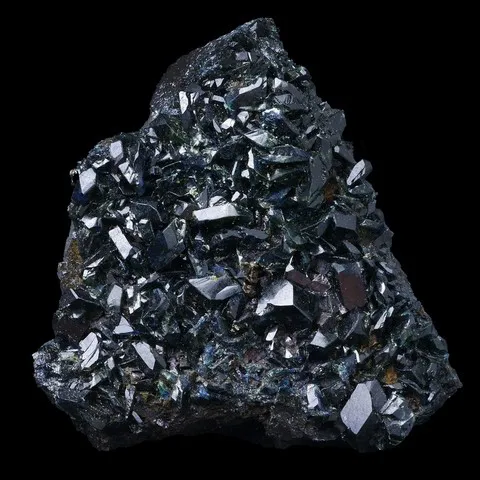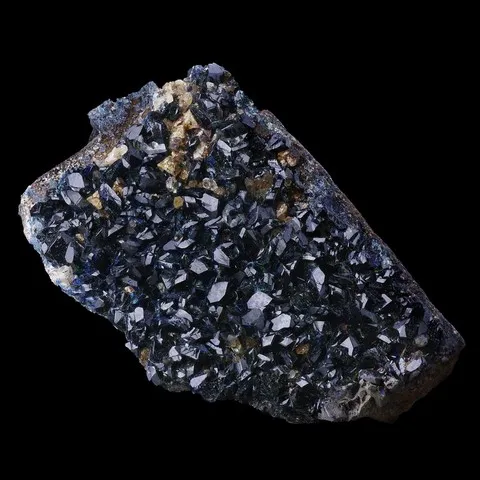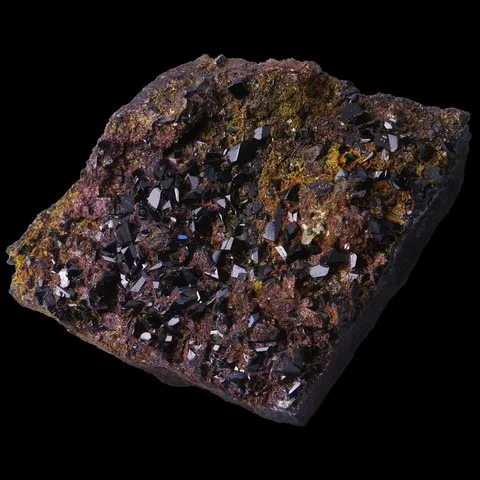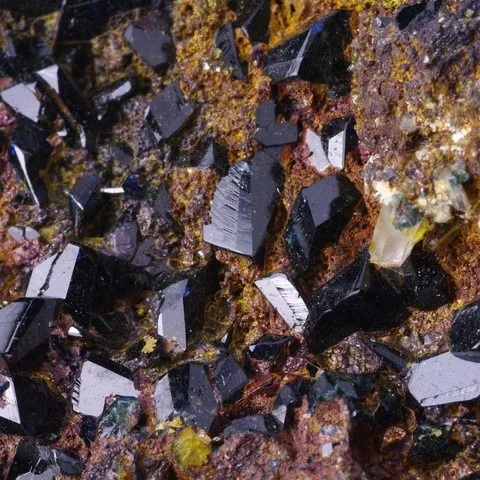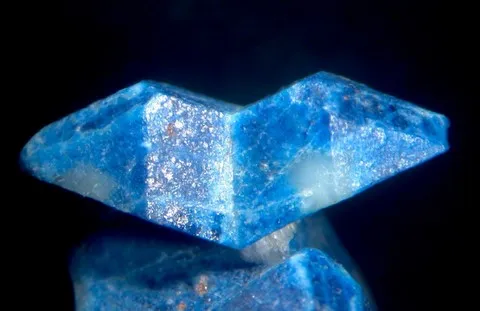LAZULITE
Class : Phosphates, arsenates, vanadates
Subclass : Anhydrous phosphates
Crystal system : Monoclinic
Chemistry : MgAl2(PO4)2(OH)2
Rarity : Uncommon to rare
Lazulite is a metamorphic mineral from aluminous rocks rich in silica (quartzites), associated with kyanite and rutile. It is also a hydrothermal mineral from high temperature veins and pegmatites. By replacing Mg with Fe, it forms a complete solid solution which extends to the scorzalite pole. Its name comes from the Latin lazulum, the Arabic lazaward and azul, the Persian lashward (blue) and the Greek lithos (the stone). The rare crystals are acute bipyramid specimens, but lazulite usually occurs in microgrenous masses of decimetric size at most. Translucent or opaque, its beautiful deep blue color, sometimes bluish white to azure blue, is characteristic. It is a mineral which can sometimes be used as a gemstone but which is nevertheless rather reserved for the mineral collection.
Lazulite in the World
Lazulite in France
In France, lazulite has been described in microcrystals in the pegmatites of the Albères massif.
Fakes and treatments
There are no fakes for this mineral species. However, confusion between lazulite and lazurite (one of the minerals making lapis lazuli) is common. This confusion stems from the fact that the "L" and "R" are pronounced the same in Asia. Asian sellers are therefore particularly inclined to confuse the two species.
Hardness : 5.5 to 6
Density : 3.12 to 3.24
Fracture : Irregular
Trace : White
TP : Transparent to opaque
RI : 1.604 to 1.663
Birefringence : 0.035
Optical character : Biaxial -
Pleochroism : Strong
Fluorescence : None
Solubility : Acids
Magnetism : None
Radioactivity : None

